India’s reality
India is rated #4 in violence against women, but discrimination against women and girls throughout their life cycle make it the most dangerous place on earth to be born a girl.
The issue
India is a vastly diverse and unique country. Part of this uniqueness is the dichotomy between the rise of the status of women amidst simultaneous rising rates of violence and discrimination. While India is changing, and making strides for good it has yet to shake the harsh reality that it is the most dangerous place on earth to be a girl.
An Indian girl child aged 1-5 years is 75% more likely to die than an Indian boy, making this the worst gender differential in child mortality for any country in the world.
India is such a dangerous place to be a girl because it is such a dangerous place to be a woman. The subjugation of women begins, is perpetuated, and repeats generation after generation in the home. It is an unpalatable and yet as such insufficiently appreciated fact that much, if not most, of the violence in society takes place within a family setting (John Ekeelaaz, Family Law Social Policy.) Each year violence, especially domestic violence is increasing. Significant numbers of India’s population are routinely subjected to torture, starvation, terrorism, humiliation, mutilation, and murder simply because they are female. Crimes such as these should be recognised a civil and political emergency.
” What is this thinking that we have in us? What is this thinking that make us men believe that we have a right to hit a woman? And what is this thinking that makes many women accept this beating for years on end?
If one section of society were to start physically beating up and assaulting another section of society, the police would declare it a riot. We have a Civil war raging in our homes, streets and Communities where one section of the population is literally beating up the other section of the population.” – Aamir Khan
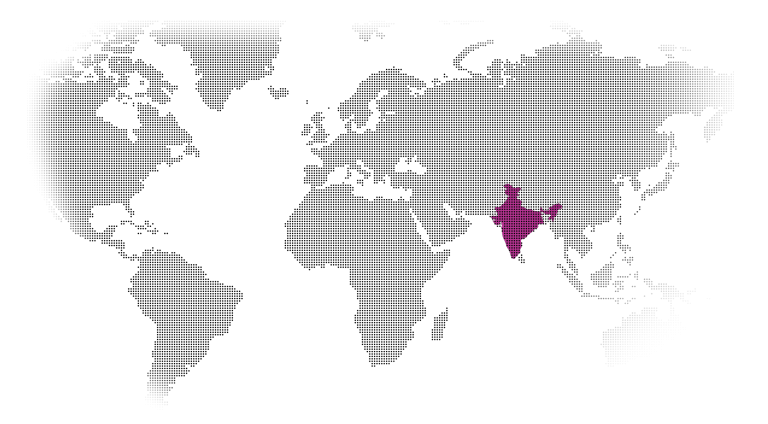
The Statistics
All statistics are from reliable sources including the United Nations and Government of India reports. Click on the images to link to original sources.
Maternal Mortality
Maternal mortality is one indicator that women's lives are under valued in comparison to men's, and as such the investment into their health is often not a priority. According to UNICEF, 55,000 women die every year due to preventable pregnancy-related causes in India.
22% of women in India who are now aged between 20-25 years, gave birth before the age of 18. Child marriage (read more below) leads to early, forced child births that not only seriously jeopardize the mother's health but stunt her personal growth and place pressure on the young couple, exacerbating the risk for violence in the household. 22%
Violence Against Women and Girls
India is rated the 4th worst country in terms of frequency and severity of abuse against women. Violence is the leading cause of death for women aged 16-44. A (reported) violent crime is committed against a woman in India every 3 minutes.
54% of women, 53% of girls, 51% of men and 57% who were polled agreed that a husband hitting his wife is a justifiable expression of masculinity.
Domestic abuse is on the rise in India. In Andhra Pradesh and Telangana it is rising by 10% every year. Yet 2 out of every 3 abused women will never speak about the abuse. Only 1 out of every 4 will ever seek help.


What’s causing this?
There are many causing factors behind the rates of violence against women and girls. Here are a few.
Child Marriage
Child marriage, much like the cultural practice of dowry, is illegal yet still very common in India especially in Northern States like Rajasthan, Madhya Pradesh, and Uttar Pradesh. Girls are not ready physically, emotionally, or mentally
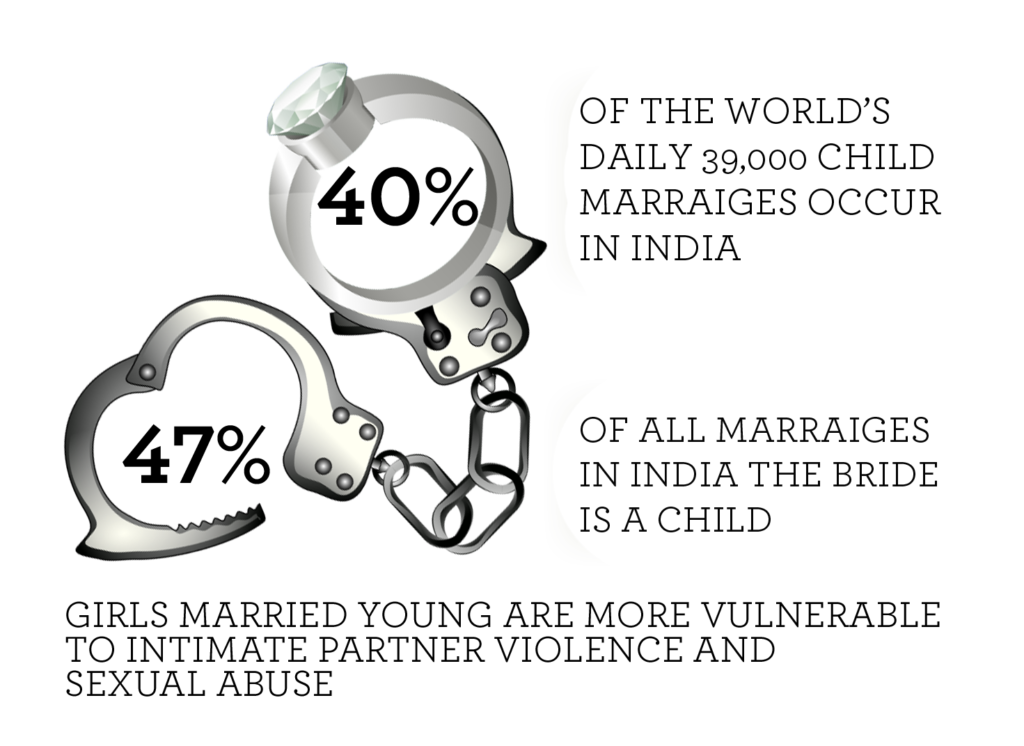
for marriage. This makes them especially vulnerable not only to being a victim of abuse but also to accepting abuse as natural. Girls who are married before they are 18 are twice as likely to be physically abused and three times as likely to be sexually abused by their husbands.
India has the world’s highest rate of domestic violence among women married by 18, with a rate of 67% (UN Children’s Fund.)
According to a recent health report, child marriages contribute to virtually every social malaise that keeps India behind in women’s rights. The problems include soaring birthrates, grinding poverty and malnutrition, high illiteracy, infant mortality, low life expectancy, and of course, domestic violence.
Alcohol
Alcohol is the number one cause for domestic violence, especially among poor families. In India there are several festivals, family celebrations, and even a death in the family that are an occasion to eat and freely drink. Drunkenness has increased family violence at home. Children grow up with the notion that it is okay to drink, beat, and fight as “it is in our culture.” The morning after a violent incident, “I didn’t know what I was doing” is accepted by the wife and children as the truth, and the cycle of abuse continues.
Dowry
The cultural practice of dowry, which is the money, goods, or estate that a woman is expected to bring into a
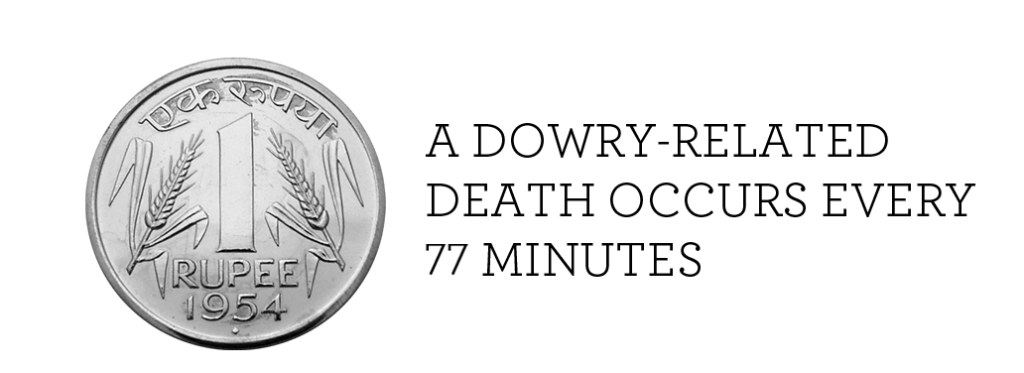
marriage, results in harassment and domestic violence. This violence can come in the form of psychological abuse, physical abuse, financial repression, or even “dowry murders” from both the husband and the in-laws who were expecting a greater financial gain from the marriage. Dowry has no foundation in any major religion and although it is illegal in both India and several other South Asian countries, it persists at all levels of society.
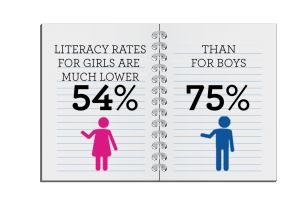
Lack of Education
India has the world’s largest population of non-school-going working girls. They receive a far lesser education as compared to their male counterparts. While The Indian Constitution guarantees free primary school
education for both boys and girls up to age 14, the reality is primary education in India is not universal. In 2001 the literacy rate for males in India was 75.85% and 54.16% in females, a gap of 21.70%.This is a result of families placing a premium on educating their sons while educating their daughters is viewed as a burden. An unskilled, uneducated, and often illiterate girl who enters into marriage is completely reliant on her husband. This puts him in a position of supreme power and her in a position of fear, a combination which creates a fertile breeding ground for domestic violence.
Divorce
Divorce in India is rare – it is considered a shameful admission of a woman’s failure as a wife and daughter-in-law. This is especially true in poorer and rural communities. In 1990, divorced women made up a minuscule 0.08% of the total female population. Both Hindu and Muslim personal laws fail to recognise matrimonial property. Upon divorce, women have no rights to their home or to other property accumulated during marriage. Because of this, regardless of how extreme a domestic violence situation might become, it is incredibly rare that a woman will file for divorce.
Pride in Possession
Men often take pride in the fact that it is his privilege to beat his wife and children, they are his possessions and property and it is a way of unloading the anger and frustrations of daily life without any fear and, almost always, without any consequences.
Expectations in Religion
In Hindu religion, the husband is her God. Thus, he can do no wrong and cannot be questioned about the violence. She will think the violence she is facing is her fate. In Muslim religion, the wife will face severe insecurity because her husband can divorce her at will and take up to 4 wives. In Christian homes, it is often expected that woman should remain meek and quiet; it is considered dishonourable if she complains. She must bear the violence and abuse quietly.
*Note: My Choices Foundation is a secular organization that values and respects all faiths. No religion can categorically be stated to be at fault for violence against women and girls. It can be argued under each religion’s tenants that women are to be respected, valued, and loved. If you would like to know more about what each major religion in India says about women, we suggest you read Chayn India’s articles!
What can we do about this?
The Solutions
Long lasting solutions require both prevention and intervention based approaches. Operation PeaceMaker works to provide rights education to communities and individuals in order to help foster a broader unacceptance of domestic abuse. The core of our impact, however, lies in the services we provide to hand hold individuals and families through their journey to peace.
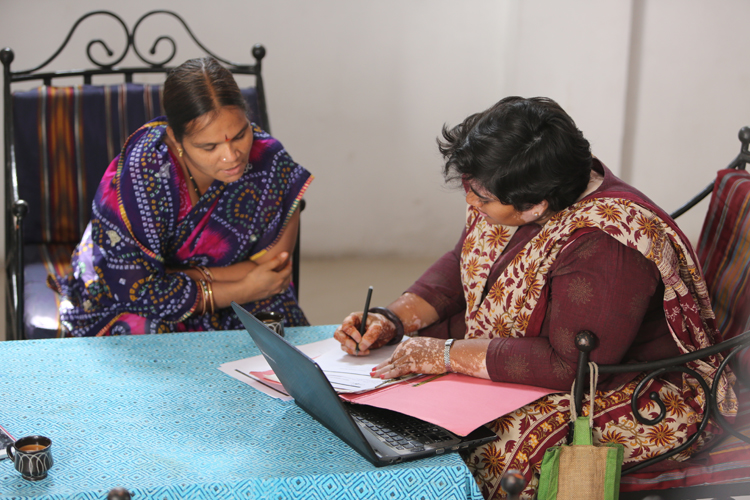
The Solutions
Long lasting solutions require both prevention and intervention based approaches. Operation PeaceMaker works to provide rights education to communities and individuals in order to help foster a broader unacceptance of domestic abuse. The core of our impact, however, lies in the services we provide to hand hold individuals and families through their journey to peace.
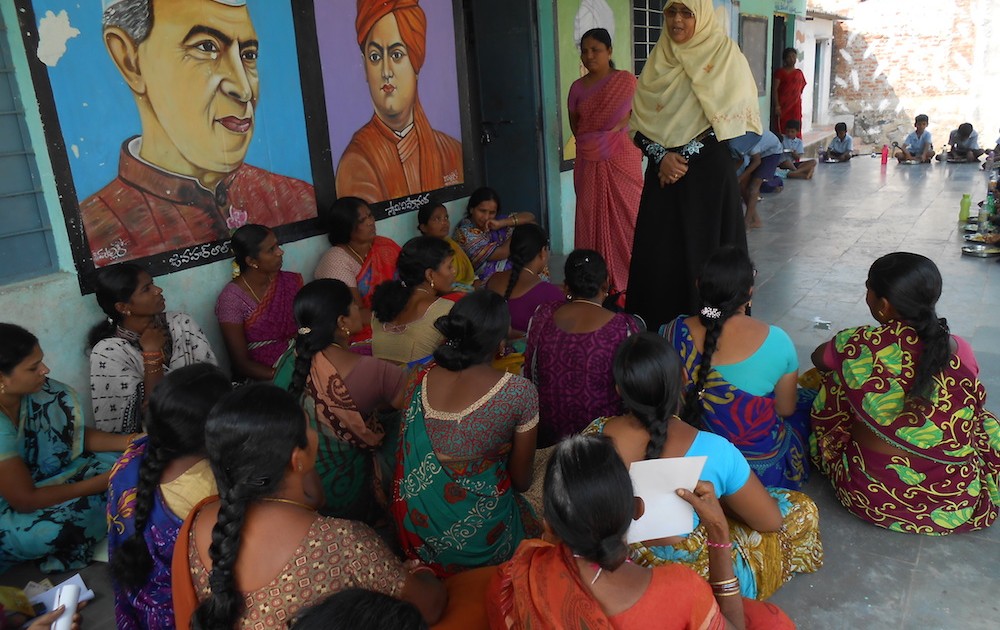
Create Community Awareness
Spreading education on the rights of women and children at the community level is not only a prevention strategy, but also an intervention strategy. Individuals and families facing abuse are equipped with knowledge of their rights, and how to act on them. We see many cases coming forward from our Community Meetings because of the added support of our free services. Community Meeting beneficiaries often tell us that it is the first time they have ever heard that abuse is wrong!






